Space Heaters vs Central Heat: Differences Explained (With Pictures)
-
Pete Ortiz
- Last updated:

When winter comes around, you must ensure you’re well-equipped to stay warm. Winter means you have to heat your home, and there are lots of options for you to choose from. There are two primary devices you can use to heat your home when temperatures drop – space heaters and the central heating system.
Space heaters (or electric space heaters) are portable appliances that warm a specific area of your household. They provide supplemental heat for a small space like an office or bedroom.
On the flip side, central heating is designed to heat your entire home. It circulates hot water through pipes in the walls of your house. You can control the temperature in each room with separate thermostats.
Choosing between heating your home with central heat or a space heater can be challenging. There are several factors to consider, such as cost, convenience, and efficiency. So, what is the best way to stay warm? – Space heaters or central heating?
In this guide, we will help you decide which type of heater is suitable for you. So, without further ado, let’s jump right in!
Click Below to Jump Ahead:
Overview of Space Heaters

Space heaters are one of the most popular heating devices used in homes and offices. Most space heaters have a powerful heating element that can warm a room fast. It makes them ideal for those who need to heat their living space fast.
Space heaters are an alternative to central heating systems. They can provide heat in rooms where it might not be possible or practical for a traditional heating system. You can also use space heaters for outdoor activities, such as camping or tailgating.
Let’s now look at how space heaters work. This way, you’ll understand these handy appliances better.
How Do Space Heaters Work?
Space heaters come in many sizes, from small tabletop models that can warm up an office or bedroom to large models capable of heating a large room.
They use electricity to generate heat, and they simply work by using a coil made from copper or aluminum wire wound into a spiral shape. The coil is mounted inside a heater box and connected to an electric current. When electricity passes through the coil, it generates resistance, increasing its temperature until it glows red hot.
Then, it gives off infrared radiation (invisible light you cannot see using the human eye). This radiation heats things just like visible light does.
Space heaters use either convection or radiation to disperse heat in a room. Convection uses hot air to blow around the room and radiate the heat from there.
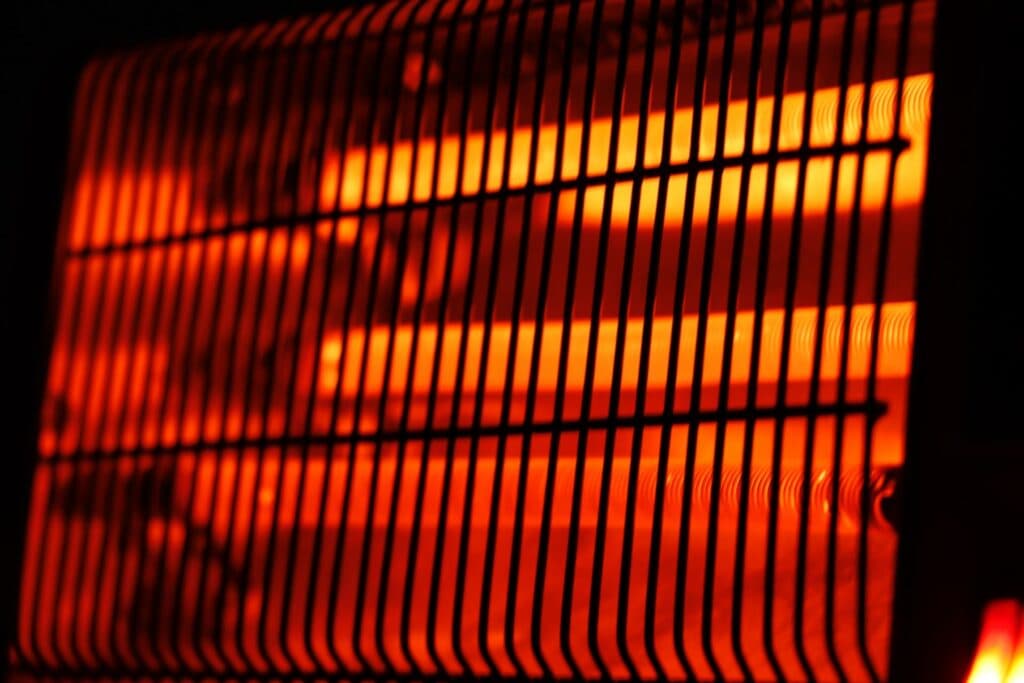
What Is a Space Heater Good For?
Space heaters are beneficial for small areas. They use less energy than central heating systems. You can use a space heater if the primary heating system is unavailable. You can also use it if you find that the central heating system is too expensive to install and run.
Overview of Central Heating System
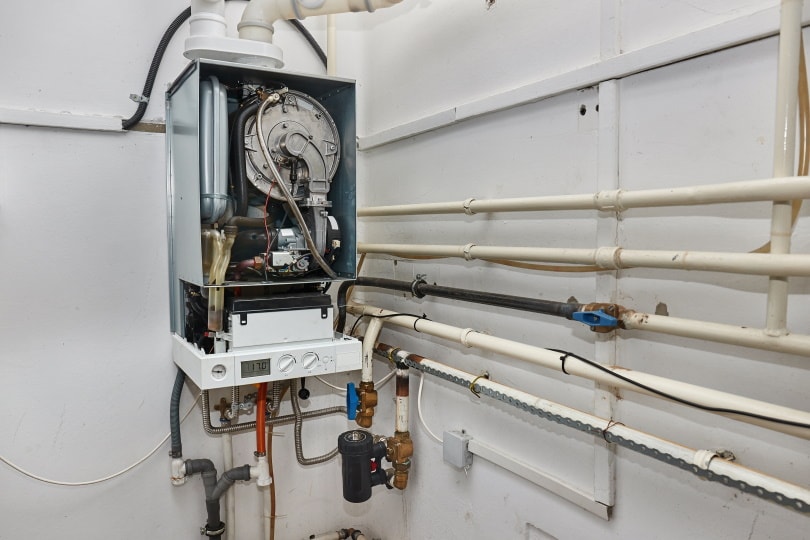
Central heating systems are designed to heat an entire house using one source. They differ from room heaters in that they can provide continuous heat rather than the intermittent heat of a room heater.
The central heating systems can be ducted or ductless, depending on your needs and budget. Ducted central heating systems use ductwork to distribute hot air throughout your home. Ductless central heating systems don’t need ductwork. Instead, they use individual radiators to warm each room individually.
Usually, central heating systems are more expensive than other types of heating systems but they can provide greater energy efficiency and convenience.
So, how do central heating systems work? Well, let’s find out!
How Does the Central Heating System Work?
The central heating system is a complex network of pipes, valves, and radiators that work together to heat a home. The system works by distributing hot water or air through pipes connected to radiators or convectors that heat up and distribute the heat throughout the house.
Simply put, heat travels from the boiler through the system using water and air. The water heats up as it passes through the system, while the air cools down. Then, the heat travels into your home through the radiators, warming up the rooms in your house.
As the air travels back through the system towards the boiler, it passes through an air vent that regulates its temperature. It allows you to control how much heat is in each room by adjusting where you place your radiators. It’s a simple concept but takes a lot of work to get right.
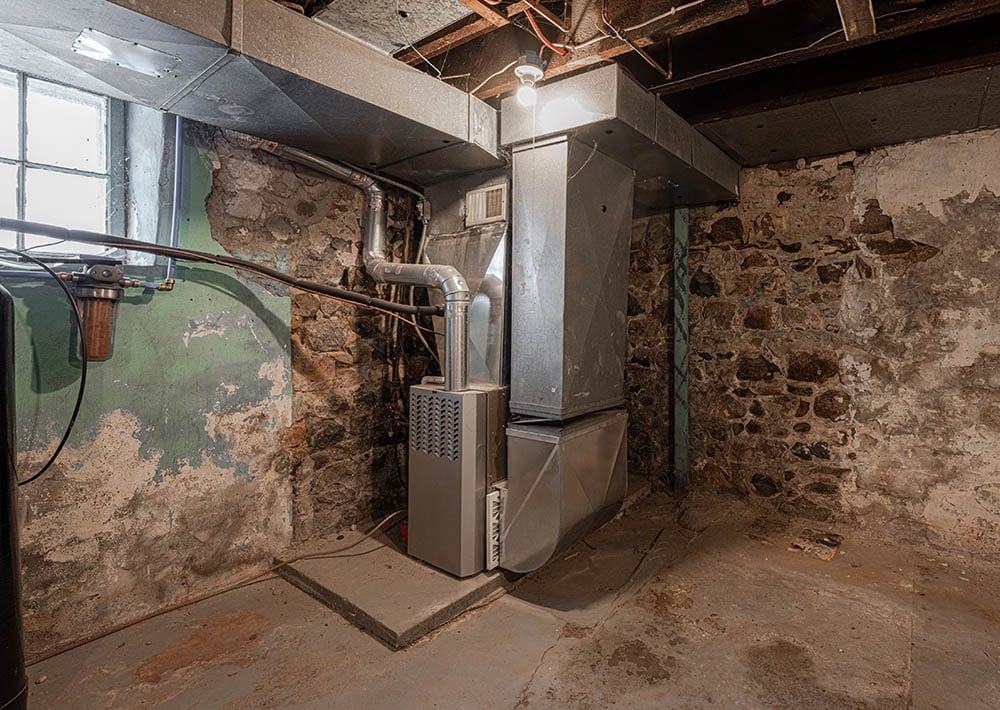
What Is a Central Heating System Good For?
A central heating system allows you to have heat throughout your entire house instead of just one room or area at a time. So, there’ll be no need for many radiators or other devices to provide heat in various parts of your home. All you need is one device that provides heat throughout the entire house! All rooms are heated at once by one central unit!
The 6 Types of Space Heaters
There are different types of space heaters available on the market today. Each has its advantages and disadvantages. Also, each may be better suited for your needs than others. Here are some of the most common types of space heaters.
1. Ceramic Space Heaters
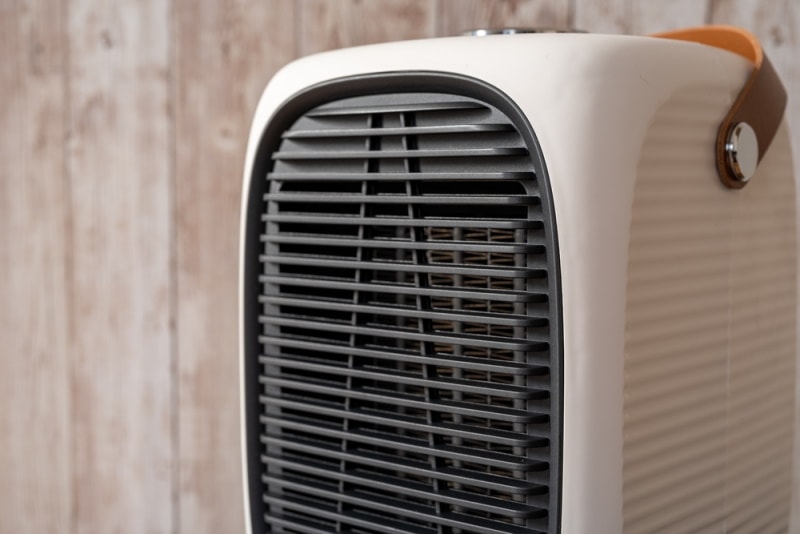
Ceramic space heaters have a heating element in the unit’s base. It heats one side of the ceramic material. Then, it disperses heat throughout the room. These units are often used in small rooms as they can’t handle large open areas well. Also, they are usually more expensive than other types of space heaters.
- The housing is cool to touch
- Instant heat
- Compact size
- Portable
- The ceramic plates cool slowly. It still radiates heat after switching if off
- Physical objects can obstruct heat transfer
- It can only heat smaller spaces
2. Infrared Space Heaters
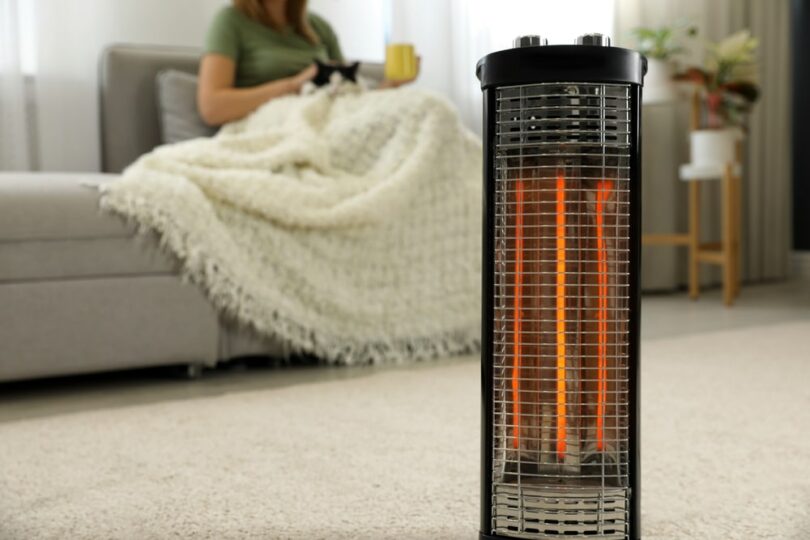
Infrared space heaters are also called radiant heaters because they emit infrared radiation to warm up objects in the room. The radiation is invisible to the naked eye, but you can feel it.
Infrared space heaters don’t use electric coils or burn gas like other types of space heaters. Instead, they generate warmth through infrared electromagnetic waves emitted from the ceramic elements.
These space heaters also don’t need a fan to run. They use electromagnetic waves rather than a heating element to heat an area. But several models come with a fan to accelerate the heating procedure.
Usually, these units are safe for use around pets and children. They don’t produce harmful fumes or particles that could pose a threat to your kids’ safety.
- Physical objects don’t obstruct heat transfer
- Heat transfer takes place even after you switch off the infrared space heater
- The casing is cool-to-touch
- It comes with wheels to move it around
- It’s heavy
- More costly compared to fan and ceramic heaters
- It needs physical objects in the room to absorb heat
3. Fan Space Heaters

Fan space heaters are one of the most common types of space heaters. They’re also known as convection heaters. They use a fan to blow air from the heating element toward you. So, they distribute heat more evenly than radiant heaters. This type of heater is best for smaller rooms.
- Affordable
- Heats instantly
- Compact size
- Lightweight
- It cannot heat a large room
- Physical objects can obstruct heat transfer
- It must operate continuously to deliver heat
4. Oil-Filled Space Heaters
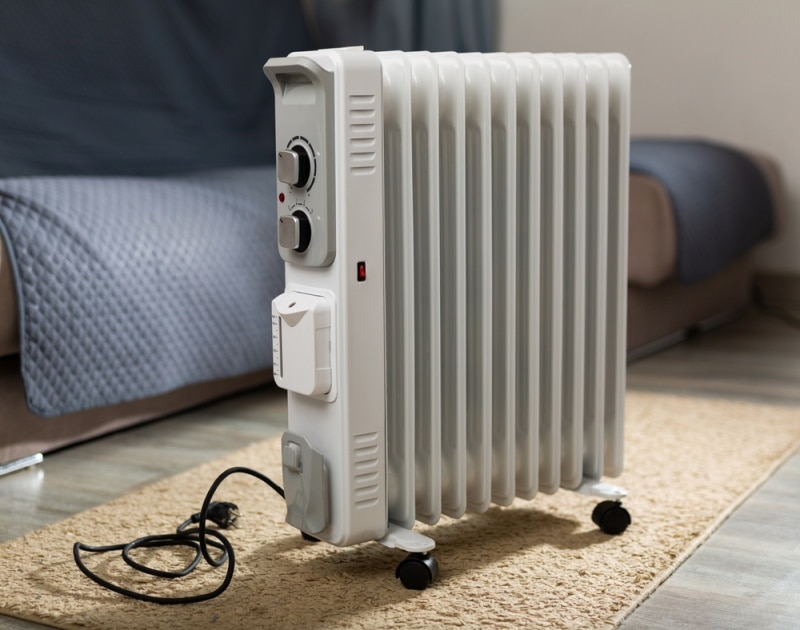
Oil-filled heaters produce less noise than other space heaters while delivering plenty of warmth in small rooms. They use diathermic oil, and they generate heat through combustion processes that occur within their chambers.
After the oil gets heated, it circulates via the fins (columns). The fins become hot, and the temperature rises. This way, heat is emitted into the air. These space heaters don’t come with a fan because they emit heat through convection.
- Some oil-filled space heaters come with a digital thermostat
- Ideal for large rooms
- Quiet
- The room remains heated for some time even after switching it off
- Safe to use around kids
- You cannot regulate the heat speed
- Heavy compared to other space heaters
- They take time to heat a room
5. Panel Space Heaters
These heaters are free-standing units. You can install them directly on the wall or floor. They consist of a metal frame with a heating element that sits behind an opaque panel on one side of the unit.
Panel space heaters provide continuous radiant heat without producing drafts or noise. Also, they’re like miniature versions of central heating radiators, minus the pipes and ductwork.
Besides, panel space heaters come in various wattages. So, make sure you get a suitable one for your needs. Some models have automatic shutoff features to prevent overheating.
- Easy to use
- Reduces risk of fire
- You can place it on the floor or attach it to a wall
- Elegant and modern looking
- It doesn’t emit enough heat compared to other space heaters
- It’s not portable
6. Propane Space Heaters
These space heaters are an excellent option for those who don’t have access to electricity. They run on liquid propane (LP), and they don’t need an electrical outlet. So, they’re more portable than other space heaters. They work similarly to infrared heaters. They release electromagnetic waves into the air. Then, it heats nearby items.
Usually, propane space heaters are more expensive to purchase than electric models, but they provide more even heating. They don’t have exposed heating coils that can get too hot to burn people or pets.
Though liquid propane heaters are expensive to purchase, in terms of energy consumption, they prove cheaper than electricity and don’t need installation. They’re inexpensive to operate compared to space heaters that use electricity.
- The most portable space heater
- No electricity is needed to operate
- It produces intense heat
- It needs liquid propane to produce heat
- Risk of fire and explosion due to burning fuel
The 3 Types of the Central Heating Systems
The central heating system is a crucial part of a house. It keeps your family warm in winter and cool in summer. An ideal central heating system can make a house comfortable and enjoyable to live in.
Different types of central heating systems include:
1. Furnaces
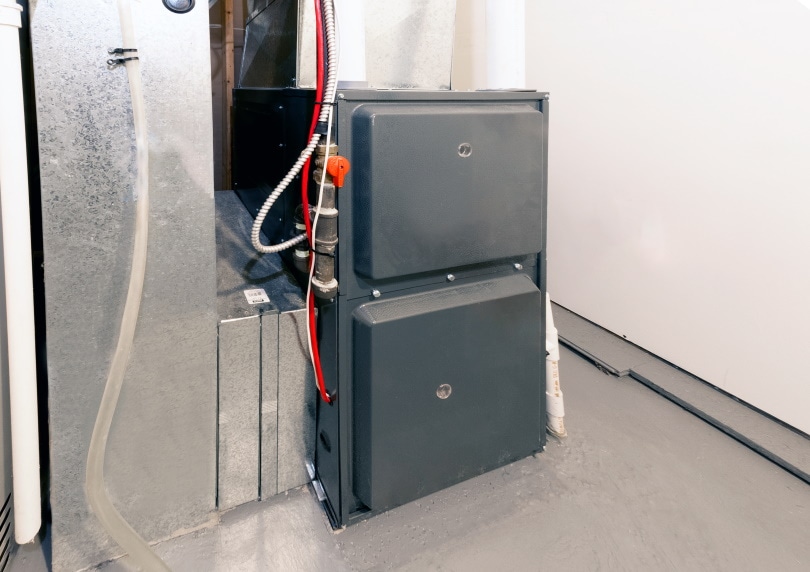
A furnace is an appliance that heats air and distributes it throughout the home through ductwork. You can use it for heating and cooling your home. Furnaces are made up of a combustion chamber and burner with an exhaust damper. It removes smoke from the flue pipe, which leads outside the house.
The flue pipes carry hot gasses away from the furnace through the chimney or vent stack. Cold air enters through vents in the room being heated. A blower motor forces air into ducts that run throughout your home.
The blower motor turns on when you turn on your thermostat. It continues working until you turn it off again. Usually, furnaces are located in the basement or garage, but some are installed in attics or crawl spaces. They can be fueled by natural gas, oil, or propane, or they can be electric.
- Affordable initial cost
- It leads to high indoor air quality
- It heats your entire home fast
- Highly efficient
- Furnaces are available in many sizes and models
- Running them is costly
- They’re noisy
2. Boilers
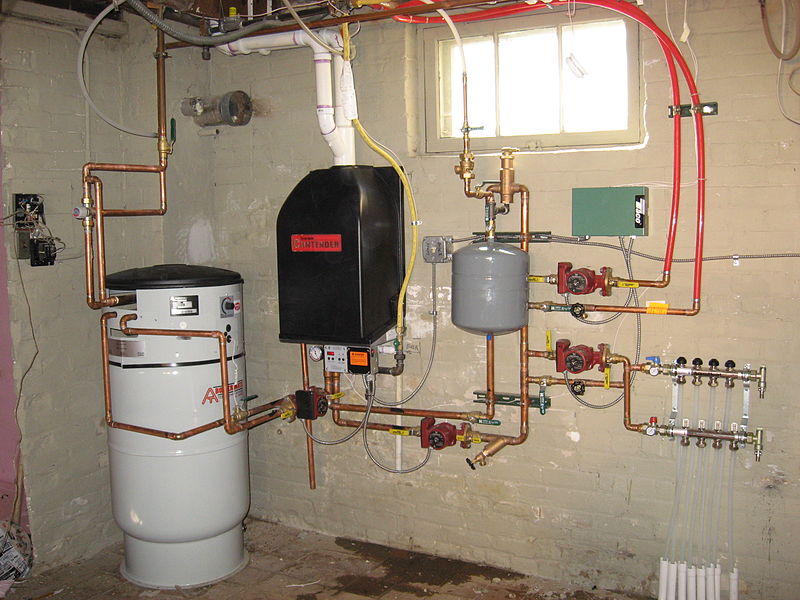
But if you have an older house with an existing boiler, consider upgrading it so that it can meet current building regulations. It’ll also allow you to take advantage of modern technology and features such as timers and thermostats that can help save money on your energy bills by keeping your house at an optimum temperature always.
The most common boiler type is called an ‘indirect’ boiler. Water circulates round coils inside the boiler before being heated up and sent through pipes into your rooms. You can also get ‘direct’ boilers where there is no water tank. These have more moving parts. So, they need regular maintenance, but they save space because there is no tank taking up valuable room in your basement.
- Consume less fuel to generate heat
- Quiet
- Improves the air quality in your home
- The heat from boilers is consistent
- Cost-efficient
- Installation takes time
- Boilers take up a lot of space
3. Heat Pumps
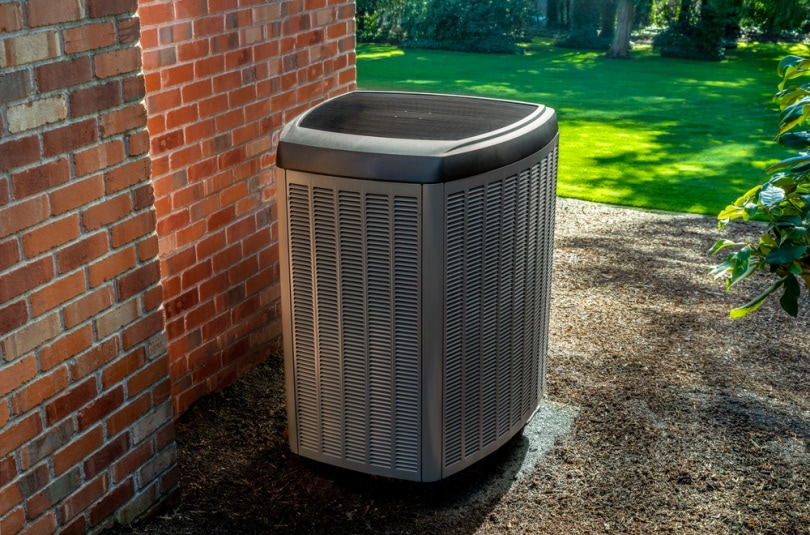
Heat pumps use electricity to exchange heat between two fluids at different temperatures, usually air and water. They are often more expensive than other types of central heating systems because they need more advanced technology. But they are efficient in colder climates due to their ability to transfer heat from outside air into your home during winter.
Heat pumps are also more efficient compared to furnaces because they only use electricity when heating or cooling the house. You can use heat pumps as part of a central heating system or as standalone units. Also, you can use them in winter to heat and summer to cool, depending on your needs.
- Durable
- Needs minimal maintenance
- Minimizes carbon emissions
- Reduced cost of operation
- High initial cost
- Installing it is challenging
- Some fluids used in heat transfer are not sustainable
What Are the Differences Between a Space Heater and a Central Heating System?
There are several differences between a central heating system and a space heater. Let’s look at some of them. With this, you can decide what the cost-effective option is for you.
Cost
Cost is the biggest factor when it comes to choosing between a central heating system and a space heater. A central heating system will be more expensive than using one space heater. But it also offers several benefits that a space heater doesn’t provide.
Central heating systems are more efficient than space heaters. They use many components to deliver warm air throughout your entire home.
So, a space heater is cost-effective if you want to heat one room. On the flip side, if you want to heat all rooms in your house, a central heating system is more cost-effective than buying a space heater for each room.
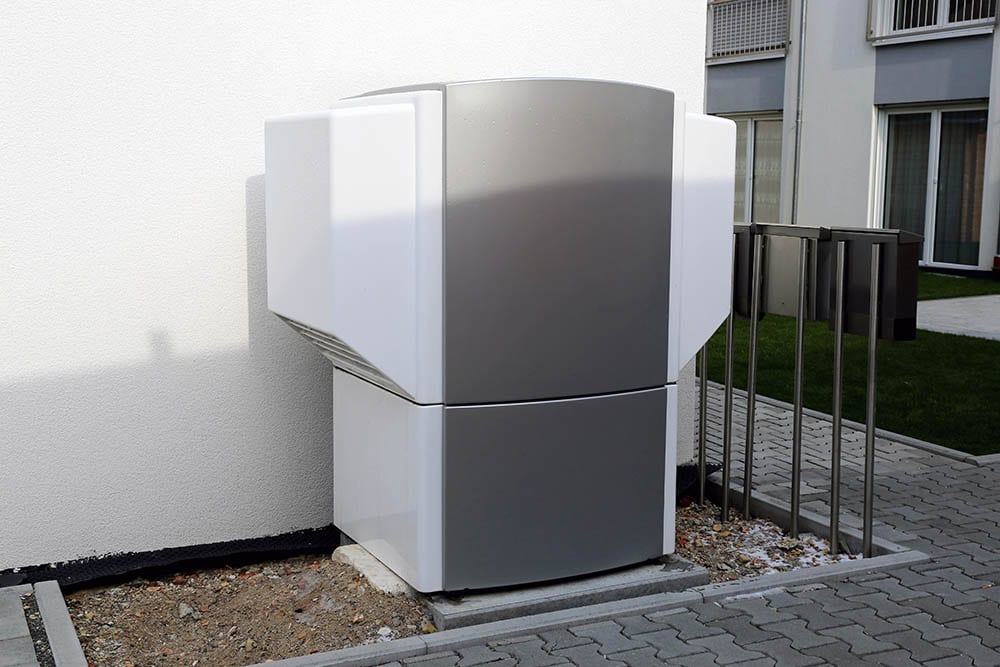
Energy-Efficiency
Central heating systems are more energy efficient than space heaters. It’s because they have better insulation. It means they’ll use less energy than space heaters to do the same job.
Portability
Space heaters are portable. You can carry them from one room to another. On the other hand, a central heating system is not portable-it is a fixed system designed to heat an entire home or building. So if you are looking for something that can be shifted from place to place or from one house to another, you are definitely looking at a space heater and not a central heating system.
Installation
A central heating system consists of many components. So, it needs professional installation by a licensed technician. On the other hand, you can install a space heater if you have basic knowledge of electrical wiring.
Safety
One of the primary differences between a space heater and central heating comes down to safety. Space heaters can cause fires, especially if they’re not used well.
A central heating system doesn’t pose as many risks as a space heater. It doesn’t get hot enough to catch fire or burn anyone who touches it accidentally.
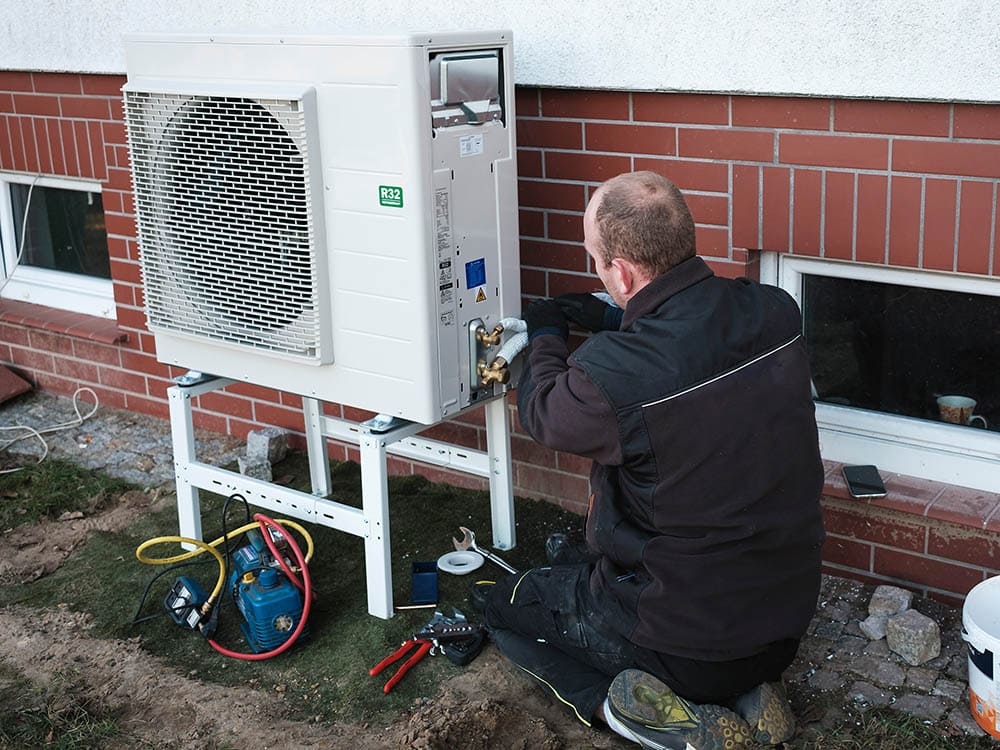
Space Heaters vs Central Heat: Which One Is Right for You?
A space heater is a great way to heat a small room. It’s cheap, easy to operate, and you can use it for quick heating whenever you need it. Some space heaters also have a cool feature. This way, you can use them as cooling fans during summer.
On the other hand, central heating is more expensive than space heaters. It takes more time to install, but it has its benefits too. Central heating systems can provide consistent heating throughout your home.
You don’t have to worry whether some rooms are warm, while others are chilly! Also, they are quieter than space heaters. It makes them excellent options for people who want silent heating systems in their homes.
So, which one is right for you? It all boils down to your heating needs. If you just want to heat just a small space or one room at a time, a space heater would be better placed to do this. However, if you want the entire house heated, it would be very less economical to buy a space heater for each room. In this case, a central heating system is what you need.
But having looked at the pros and cons of each, you are better informed to make a choice depending on your budget and heating needs.
Final Thoughts
When heating your home, it’s not just a matter of deciding which type of heating you want to go with. There are other considerations as well, such as the appliance’s cost-effectiveness. If you want to be more certain about which type of heating system will save you the most money, take the time to evaluate your energy needs and compare.
In the end, nothing is more important than providing a budget-friendly, safe, and comfortable indoor climate for you and your family.
- How do Space Heaters Work?
- How does the Central Heating System Work?
- Different Types of Space Heaters
- Different Types of the Central Heating Systems
- What are the Differences between a Space Heater and a Central Heating System?
- Space Heaters vs. Central Heat: Which one is Right for you?
- ENERGY SAVER
- CITY OF YORK COUNCIL
- MYLEK
- ENERGY GOV
Featured Image Credit: (L) LightField Studios, Shutterstock | (R) oasisamuel, Shutterstock
Contents


